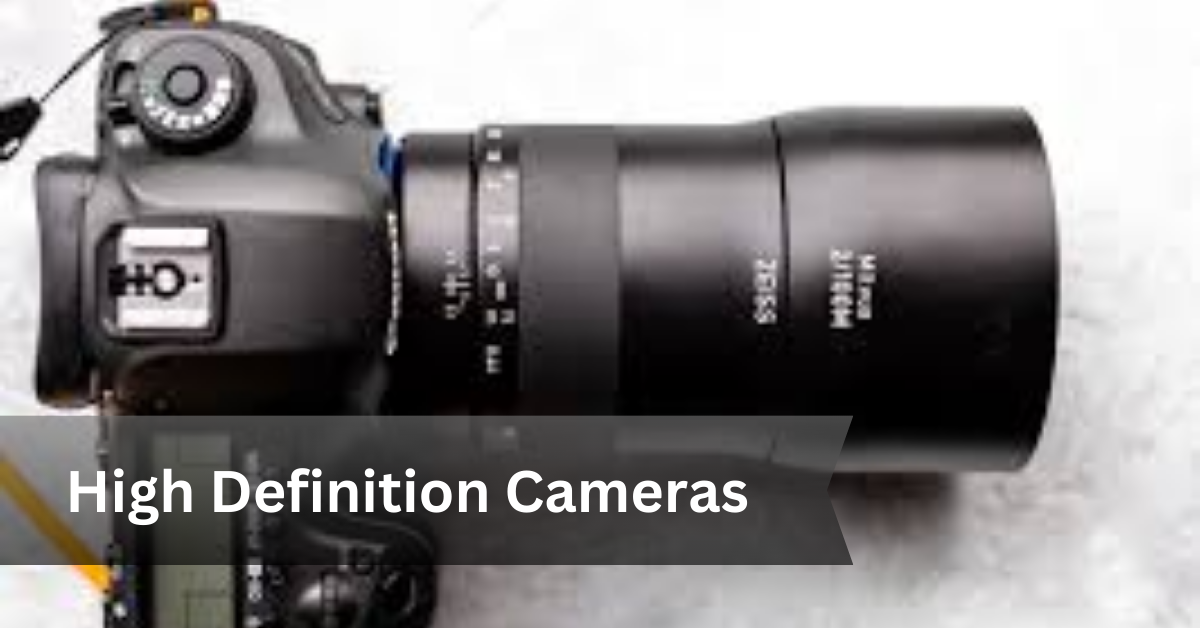The demand for high-definition cameras is growing across photography, videography, and security. From professional photographers capturing breathtaking landscapes to businesses ensuring top-tier surveillance, high-definition cameras have become an essential tool.
With advancements in 4K, 8K, and AI-driven imaging, choosing the right HD camera is more important than ever.
Modern high-definition cameras offer unmatched clarity, dynamic range, and smart features, making them indispensable for both casual users and industry professionals.
The right HD camera enhances clarity, details, and overall image quality, ensuring that every shot is sharp, vibrant, and true to life. Whether you’re capturing memories, producing high-quality video content, or securing your premises, investing in the best HD camera can make all the difference.
In this guide, we’ll break down everything you need to know about high-definition cameras—key features, resolution differences, how they work, and expert recommendations on the best models for different needs.
What is a High-Definition Camera?
A high-definition (HD) camera is designed to capture images and videos with superior detail and sharpness. The most common resolution standards include:
- 720p HD (1280×720 pixels) – Basic high-definition quality, suitable for casual use.
- 1080p Full HD (1920×1080 pixels) – Standard for professional video recording and live streaming.
- 4K Ultra HD (3840×2160 pixels) – Delivers four times the resolution of 1080p, ideal for high-end photography and filmmaking.
- 8K UHD (7680×4320 pixels) – The latest in ultra-high-definition technology, offering extreme clarity for advanced applications.
How HD Cameras Work: Sensors, Lens Quality, and Processing Power
The image quality of an HD camera depends on several key components:
- Image Sensor: Larger sensors (e.g., full-frame or APS-C) capture more light, improving low-light performance and detail.
- Lens Quality: High-quality lenses ensure sharper focus, better contrast, and reduced distortions.
- Processing Power: Modern cameras use powerful image processors to enhance color accuracy, dynamic range, and noise reduction.
Comparison: HD vs. UHD vs. Full HD – What’s the Difference?
| Feature | HD (720p) | Full HD (1080p) | Ultra HD (4K) | 8K UHD |
| Resolution | 1280×720 | 1920×1080 | 3840×2160 | 7680×4320 |
| Pixels | ~1 million | ~2 million | ~8 million | ~33 million |
| Best For | Basic video calls, casual use | Streaming, online content | Professional videography | Cutting-edge filmmaking, commercial use |
| Clarity & Detail | Good | Better | Excellent | Exceptional |
High-definition cameras have evolved significantly, offering users more detail, better color accuracy, and enhanced video performance. Choosing the right resolution depends on your needs—while 1080p is still widely used, 4K is becoming the new standard for professionals, with 8K pushing the boundaries of imaging technology.
Best High-Definition Cameras in 2025
High-definition cameras come in various types, catering to photography enthusiasts, videographers, and security-conscious users. Below are the top HD cameras in 2025 across different categories, offering cutting-edge features, high resolution, and advanced technology.
Best HD Cameras for Photography
For photographers, image quality, sensor performance, and dynamic range are crucial. These photography cameras offer exceptional sharpness, color accuracy, and advanced autofocus for professional photography.
1. Sony Alpha A7 IV – The Best All-Rounder
- Resolution: 33MP Full-Frame Sensor
- Video Capabilities: 4K 60fps
- Autofocus: Fast & accurate Real-Time Tracking
- Best For: Portraits, landscapes, and professional photography
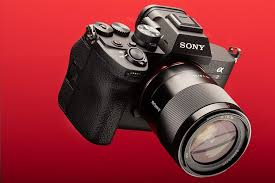
- Why Choose It? The Sony A7 IV offers an excellent balance between resolution, dynamic range, and low-light performance, making it ideal for photographers who want a versatile camera with superb image quality.
2. Canon EOS R5 – High-Resolution Powerhouse
- Resolution: 45MP Full-Frame Sensor
- Video Capabilities: 8K 30fps, 4K 120fps
- Autofocus: Dual Pixel AF with 1053 focus points
- Best For: High-resolution photography and professional video
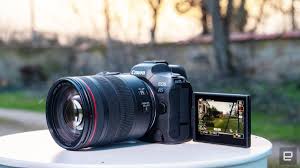
- Why Choose It? If you want stunning details and sharp image processing, the Canon EOS R5 is an industry leader, excelling in both still photography and video recording.
3. Nikon Z9 – Best for Professionals & Wildlife Photography
- Resolution: 45.7MP Stacked CMOS Sensor
- Video Capabilities: 8K 30fps, 4K 120fps
- Autofocus: AI-powered subject tracking (humans, animals, vehicles)
- Best For: Sports, wildlife, and action photography

- Why Choose It? The Nikon Z9 is a mirrorless powerhouse, eliminating the need for a mechanical shutter and offering lightning-fast shooting speeds, making it perfect for action-packed photography.
Best HD Cameras for Video Recording
For content creators, filmmakers, and vloggers, these cameras provide top-tier resolution, color grading capabilities, and smooth frame rates for professional-quality video production.
1. Blackmagic Pocket Cinema Camera 6K – High-End Filmmaking
- Resolution: 6K Super 35 Sensor
- Dynamic Range: 13 stops for cinematic footage
- Best For: Indie filmmakers, short films, and YouTube content

- Why Choose It? The Blackmagic Pocket Cinema Camera 6K delivers Hollywood-level video quality at an affordable price, perfect for independent filmmakers.
2. Panasonic Lumix GH6 – Best for Vlogging & Travel Videos
- Resolution: 25MP Micro Four Thirds Sensor
- Video Capabilities: 5.7K 60fps, 4K 120fps
- Image Stabilization: Industry-leading 5-axis stabilization
- Best For: Travel vloggers, adventure videos, YouTubers
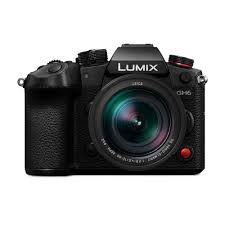
Amazon
- Why Choose It? If you need a lightweight but powerful camera, the Panasonic Lumix GH6 is the perfect choice, thanks to its stunning video capabilities and top-tier stabilization for handheld shooting.
3. Sony FX3 – Compact Yet Powerful for Cinematography
- Resolution: 12MP Full-Frame Sensor (optimized for video)
- Video Capabilities: 4K 120fps, 16-bit RAW output
- Best For: Filmmakers, commercial videography, professional YouTube content
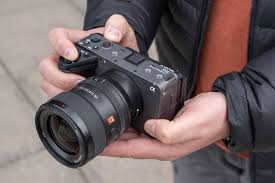
- Why Choose It? The Sony FX3 offers pro-level cinema features in a compact body, making it ideal for handheld cinematography and documentary filmmaking.
Best High-Definition Security Cameras
For home and business security, the best HD cameras offer 4K resolution, AI features, and cloud storage options for maximum safety and surveillance.
1. Arlo Ultra 2 – Best 4K Wireless Security Camera
- Resolution: 4K HDR with color night vision
- Field of View: 180° ultra-wide
- Smart Features: AI-powered object detection, two-way audio
- Best For: Home security, smart home integration

- Why Choose It? The Arlo Ultra 2 provides crystal-clear 4K video, wireless convenience, and AI-enhanced motion detection for top-notch home security.
2. Nest Cam IQ Outdoor – AI-Powered Facial Recognition
- Resolution: 1080p HD with HDR
- Field of View: 130°
- Smart Features: Facial recognition, Google Assistant integration
- Best For: Smart home security and AI-powered detection
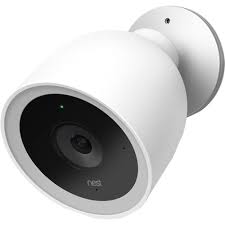
- Why Choose It? The Nest Cam IQ Outdoor stands out for its advanced AI capabilities, offering facial recognition, intelligent alerts, and Google Assistant integration.
3. Reolink 4K PoE – Best Wired Surveillance Option
- Resolution: 4K Ultra HD
- Field of View: 87°–105° depending on the model
- Smart Features: Night vision, motion detection, PoE support
- Best For: Business security, outdoor surveillance
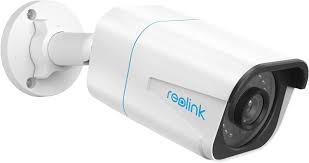
- Why Choose It? The Reolink 4K PoE camera is the best wired surveillance system, offering reliable 24/7 monitoring with no Wi-Fi dependency, making it perfect for businesses.
Whether you’re a photographer, filmmaker, or security-conscious homeowner, there’s a high-definition camera tailored to your needs.
- For photography, the Sony A7 IV is an excellent all-around choice, while the Canon EOS R5 excels in high-resolution imaging.
- For video, the Blackmagic Pocket Cinema Camera 6K delivers professional-grade cinematography, while the Sony FX3 is perfect for compact, high-end filmmaking.
- For security, the Arlo Ultra 2 is a top-tier 4K wireless security camera, while the Reolink 4K PoE provides the best wired surveillance solution.
Choosing the right HD camera depends on your specific needs and budget, but the options above represent the best in 2025 for superior image quality and performance.
Key Features to Look for in an HD Camera
When choosing a high-definition camera, consider the following key factors that impact image quality, performance, and usability.
1. Resolution & Image Quality
- Higher Resolution = Sharper Images – A camera’s megapixel count determines how much detail it captures. While 1080p (Full HD) is still common, most modern cameras now offer 4K and even 8K resolution for crystal-clear images.
- Why 4K is the New Standard? – For professionals, 4K resolution ensures better detail, cropping flexibility, and future-proofing for video and photography projects.
2. Lens & Sensor Technology
- Sensor Size Matters – The sensor determines light capture, detail, and depth of field. Larger sensors perform better in low-light conditions.
- Full-Frame Sensors – Best for professional photography, offering superior dynamic range and depth.
- APS-C Sensors – More affordable and common in mid-range cameras.
- Micro Four Thirds Sensors – Smaller but great for compact cameras & video.
- Low-Light Performance – Cameras with larger sensors and higher ISO capabilities deliver better performance in dimly lit environments.
3. Autofocus & Image Stabilization
- AI-Driven Autofocus – Many high-end cameras now feature AI-based subject tracking, which automatically adjusts focus for people, animals, and fast-moving objects.
- In-Body vs. Lens-Based Stabilization
- In-Body Stabilization (IBIS) – Helps reduce camera shake, useful for handheld shooting.
- Lens-Based Stabilization (OIS) – Built into certain lenses, offering extra stability for telephoto and zoom shots.
4. Connectivity & Storage Options
- Wireless Connectivity – WiFi & Bluetooth allow for remote control and easy file transfers to your phone or computer.
- Cloud Storage – Some modern cameras offer automatic uploads to the cloud for backup and easy access.
- Memory Cards – High-speed SD, CFexpress, and XQD cards are essential for 4K/8K video recording to prevent buffering or slow write speeds.
High-Definition Camera Comparison
| Feature | DSLR | Mirrorless | Action Camera | Security Camera |
| Best Use | Photography | Hybrid (Photo & Video) | Outdoor, Sports | Surveillance |
| Resolution | Up to 50MP | Up to 61MP | 4K | 4K/8K |
| Portability | Bulky | Lightweight | Compact | Fixed |
| Battery Life | Long | Moderate | Short | Continuous Power |
| Autofocus | Fast, but not as advanced | AI-powered real-time tracking | Fast for action shots | Motion detection |
| Connectivity | Limited WiFi | WiFi, Bluetooth, Cloud | WiFi, Live Streaming | Remote Access |
| Best For | Professional photography, portrait, studio | Versatile hybrid use, vlogging, travel | Sports, adventure, underwater | Home & business security |
When choosing an HD camera, consider how and where you’ll use it.
- For Photography? Choose a DSLR or Mirrorless camera for the best image quality.
- For Video? Mirrorless cameras offer excellent hybrid capabilities, while action cameras suit dynamic environments.
- For Security? Go for a 4K or 8K security camera with AI features and remote access.
How to Choose the Right High-Definition Camera for Your Needs
Selecting the right high-definition camera depends on your specific use case. Different cameras are optimized for different applications, and understanding key features will help you make an informed decision.
For Photography: Prioritize Sensor Size and Resolution
- Full-frame sensors offer the best image quality, dynamic range, and low-light performance, making them ideal for professional photography.
- APS-C and Micro Four Thirds sensors are more compact and affordable while still delivering high-quality images.
- Higher resolution (e.g., 45MP+) provides greater detail, allowing for large prints and extensive cropping.
For Video: Look for 4K/6K Recording with High FPS
- 4K is the industry standard, but 6K and 8K cameras are becoming more common for high-end video production.
- A higher frame rate (fps) (e.g., 60fps, 120fps) ensures smooth motion, which is essential for cinematic and slow-motion footage.
- RAW or 10-bit recording provides better color grading flexibility in post-production.
For Security: Choose Weatherproof, AI-Enhanced Cameras
- 4K or higher resolution is recommended for capturing fine details such as faces and license plates.
- AI-powered features like motion detection, facial recognition, and night vision enhance security and automation.
- Weatherproof and durable designs ensure cameras function effectively in various conditions, whether for home or business surveillance.
Where to Buy these High Definition Cameras
These companies offer a variety of high-definition cameras for different needs:
- Microscope World – Specializes in high-definition (1080p+) microscope cameras with HDMI output for direct viewing.
- Canon Global – Provides 4K and Full HD DSLR cameras with advanced autofocus and high-level imaging.
- Bioimager – Offers high-resolution microscope cameras designed for capturing detailed specimen images.
- Wyze – Features affordable security cameras like Wyze Cam v4, offering 2.5K QHD resolution and Color Night Vision.
- Logitech – Known for high-quality webcams and live-streaming cameras with resolutions up to 4K.
Future of High-Definition Cameras – What’s Next?
Technology in high-definition cameras is advancing rapidly, leading to new innovations that will shape the future of imaging.
AI-Powered Autofocus and Computational Photography
- Cameras are integrating AI-driven autofocus, which enhances subject tracking, detects eyes, and adjusts focus in real time.
- Computational photography is improving image processing, enabling better low-light performance and dynamic range, even in compact cameras.
Advancements in 8K and 16K Cameras
- 8K cameras are becoming more accessible for professionals, offering extreme detail and future-proofing for video production.
- 16K resolution technology is on the horizon, pushing the boundaries of image clarity and realism.
Integration of VR and AR in High-Definition Imaging
- Cameras are beginning to integrate VR and AR capabilities, enabling immersive experiences in gaming, filmmaking, and virtual tours.
- 360-degree cameras with high-definition imaging are enhancing applications in real estate, tourism, and training simulations.
FAQ’s on High Definition Cameras
6 Best high-end cameras for 2025
The best high-end cameras in 2025 include models with advanced sensors, fast autofocus, and high-resolution capabilities. Brands like Sony, Canon, and Nikon are leading with innovations in mirrorless and DSLR technology. These cameras offer superior image quality, dynamic range, and video performance for professionals and enthusiasts.
High Resolution Camera
A high-resolution camera captures images with greater detail and sharpness, often exceeding 20MP. These cameras are ideal for professional photography, printing large images, and detailed cropping. Higher resolution allows for better clarity, but sensor quality and lens performance also impact overall image quality.
High Definition Camera and Monitoring System
High-definition cameras in monitoring systems provide clear and detailed video for security purposes. They range from 1080p to 8K resolution, with features like night vision, motion detection, and AI-powered recognition. These systems are widely used for home security, businesses, and surveillance applications.
The highest resolution cameras you can buy today
The highest resolution cameras available today include models like the Phase One XF IQ4 150MP and Sony A7R V. These cameras are designed for ultra-detailed photography, making them popular among landscape, commercial, and scientific photographers. High megapixels provide excellent detail retention and printing capabilities.
High Resolution Digital Camera
A high-resolution digital camera captures more pixels, allowing for sharper and more detailed images. These cameras are useful for professional photographers who need large prints or detailed edits. Full-frame and medium-format cameras often offer the highest resolutions for digital photography.
High resolution cameras that actually work?
High-resolution cameras that perform well balance megapixels with sensor quality, autofocus speed, and dynamic range. Cameras like the Canon EOS R5, Sony A1, and Nikon Z9 provide outstanding resolution with minimal noise and excellent low-light performance. Choosing the right lens also plays a crucial role in maximizing resolution benefits.
Why do some 4K cameras have less megapixels?
4K resolution is based on the number of horizontal pixels (approximately 3840 x 2160), not the total megapixels. Some 4K cameras prioritize larger pixels for better low-light performance rather than high megapixel counts. A camera with fewer megapixels but a better sensor can still produce high-quality images and videos.
Camera resolution and 4K viewing
Camera resolution determines the amount of detail captured in an image or video, while 4K viewing refers to how that content is displayed. A high-resolution camera can capture more detail, but the display device must support 4K or higher resolution to take full advantage of the quality.
Megapixels vs 4K: Beginners Questions Forum
Megapixels refer to the total number of pixels in an image, while 4K refers to video resolution. A higher megapixel count is important for photography, while 4K is relevant for video quality. Understanding the difference helps beginners choose the right camera based on their needs.
What is a high-definition camera?
A high-definition camera captures images or videos with resolutions starting from 720p (HD) up to 8K. These cameras provide clearer, more detailed visuals compared to standard definition cameras. They are used in photography, videography, and security applications.
Is 4K or HD better on a camera?
4K is better than HD in terms of resolution, offering four times the detail of 1080p. However, HD cameras may perform better in low-light situations and have smaller file sizes. The choice depends on the intended use, storage capacity, and editing requirements.
How do I set my camera to high resolution?
To set your camera to high resolution, go into the settings menu and select the highest available image or video resolution. Ensure you are using a high-quality lens and adjust settings like ISO and shutter speed for optimal sharpness. Use RAW format for maximum detail in photography.
What is the highest definition camera ever?
The Phase One XF IQ4 150MP is one of the highest resolution cameras, offering 150 megapixels. In scientific imaging, custom-built cameras can exceed this resolution, such as NASA’s space telescopes capturing ultra-high-resolution images of the universe.
Is there a 16K camera?
16K cameras exist but are rare and primarily used in specialized fields like high-end cinematography and scientific research. Brands like RED and Canon have experimented with ultra-high-resolution cameras, but consumer availability remains limited.
What is the megapixel of the human eye?
The human eye is estimated to have an effective resolution of around 576 megapixels. However, this is a rough estimate, as the eye processes images differently from digital cameras, focusing dynamically on different parts of a scene.
Can a human eye see 8K?
The human eye can perceive the detail in 8K resolution under optimal conditions, but the difference between 4K and 8K may not be noticeable at normal viewing distances. Factors like screen size and viewing distance affect how much detail is discernible.
Which phone has 576 megapixels?
No smartphone currently has a 576MP camera. Samsung has announced plans to develop such sensors, but existing flagship phones, like the Samsung Galaxy S23 Ultra, have up to 200MP sensors. Higher megapixels do not always mean better image quality, as sensor size and processing matter too.
How many megapixels is 4K?
4K resolution is approximately 8.3 megapixels (3840 x 2160). This applies to video recording, where each frame is made up of 8.3MP, unlike photography, where cameras often exceed this resolution.
Does higher pixel mean better quality?
Higher pixels can improve detail, but sensor quality, lens sharpness, and image processing play a more significant role in overall quality. More megapixels allow for better cropping and large prints, but they can also introduce noise if the sensor is too small.
How many MP is the iPhone 14 camera?
The iPhone 14 Pro features a 48MP main camera, while the standard iPhone 14 has a 12MP camera. Apple’s processing and computational photography improve image quality beyond just megapixel count.
Why is 2160p called 4K?
2160p is called 4K because it has nearly 4,000 horizontal pixels (3840 pixels wide). The term “4K” originates from the film and TV industry, which rounded up the pixel count for easier branding.
What does the K stand for in 4K?
The “K” in 4K stands for “kilo,” meaning one thousand. It refers to the approximately 4,000 horizontal pixels in a 4K resolution display or camera output.
What is the highest resolution TV?
As of now, 8K TVs offer the highest commercially available resolution (7680 x 4320 pixels). Some manufacturers are researching even higher resolutions, but content availability remains limited.
Is the PS5 4K?
Yes, the PlayStation 5 supports 4K gaming at up to 120Hz. It also has the capability to output 8K, but very few games and displays currently support this resolution.
Can PS5 run 8K?
The PS5 is capable of outputting 8K resolution, but there are currently no games optimized for 8K. Future software updates may enable full 8K gaming support.
Is all Blu-ray 4K?
No, standard Blu-ray discs are 1080p, while Ultra HD Blu-ray discs are 4K. To play 4K Blu-rays, you need a compatible 4K Blu-ray player and a 4K TV.
Do you need a special TV to play 4K?
Yes, you need a 4K-compatible TV to fully experience 4K resolution. Watching 4K content on a lower-resolution TV will downscale the image to match the display’s capabilities.
What camera has the highest resolution?
The Phase One XF IQ4 150MP is one of the highest-resolution commercial cameras available. Scientific cameras used in space exploration and research can exceed even this resolution.
What is the highest resolution photo possible?
The highest resolution photo ever taken is in the gigapixel range, with NASA’s Mars rover images and city panoramas exceeding several billion pixels. These images are created using multiple high-resolution shots stitched together.
What is the highest definition security camera?
Some security cameras now offer 8K resolution, such as those used in critical infrastructure surveillance. Most high-end security cameras operate at 4K for a balance of clarity and storage efficiency.
Is there a 16K camera?
Yes, 16K cameras exist, but they are not widely available for consumer use. Some specialized cameras, such as those developed for research, high-end cinematography, and industrial applications, can capture 16K resolution. Companies like RED have experimented with ultra-high-resolution cameras, but mainstream adoption is still limited.
What is the megapixel of the human eye?
The human eye is often estimated to have an equivalent resolution of about 576 megapixels. However, unlike a camera, the eye does not capture a single, static image; it continuously scans and processes information dynamically, making direct comparisons challenging.
Can a human eye see 8K?
The human eye can distinguish the detail in an 8K display, but the difference between 4K and 8K may not be noticeable unless viewed on a very large screen or from a close distance. Viewing conditions, screen size, and pixel density affect how much detail the eye can perceive.
Which phone has 576 megapixels?
No smartphone currently has a 576MP camera. Samsung has hinted at developing such a sensor in the future, but the highest available smartphone camera sensor as of now is around 200MP, such as the Samsung Galaxy S23 Ultra.
How many megapixels is 4K?
4K resolution is approximately 8.3 megapixels (3840 × 2160 pixels). This applies mainly to video, where each frame contains about 8.3MP of visual data.
Does higher pixel mean better quality?
Higher pixels can contribute to better image detail, but overall quality depends on sensor size, lens quality, dynamic range, and image processing. A camera with more megapixels but a small sensor can produce noisy images, while a lower-megapixel camera with a large sensor may offer superior image quality.
How many MP is the iPhone 14 camera?
The iPhone 14 Pro features a 48MP main camera, while the standard iPhone 14 has a 12MP camera. Apple’s computational photography and sensor technology help enhance image quality beyond just megapixel count.
Why is 2160p called 4K?
2160p is called 4K because it has nearly 4,000 horizontal pixels (3840 pixels wide). The term “4K” originates from the film and TV industry, where resolutions are named based on horizontal pixel count.
What does the K stand for in 4K?
The “K” in 4K stands for “kilo,” meaning one thousand. In 4K resolution, it represents approximately 4,000 horizontal pixels.
What is the highest resolution TV?
8K TVs (7680 × 4320 pixels) offer the highest resolution currently available for consumers. Some manufacturers are researching even higher resolutions, but content availability remains a challenge.
Is the PS5 4K?
Yes, the PlayStation 5 supports 4K gaming at up to 120Hz, provided you have a compatible 4K display. Some games also offer dynamic resolution scaling for better performance.
Can PS5 run 8K?
The PS5 has 8K output capability, but currently, no games are optimized for 8K resolution. Future updates may enable 8K gaming when more compatible displays and content become available.
Is all Blu-ray 4K?
No, standard Blu-ray discs are 1080p, while Ultra HD Blu-ray discs support 4K resolution. To play 4K Blu-ray discs, you need a 4K Blu-ray player and a compatible 4K TV.
Do you need a special TV to play 4K?
Yes, you need a 4K-compatible TV to fully experience 4K resolution. A standard HD TV will downscale 4K content to its native resolution, reducing the overall quality.
What camera has the highest resolution?
The Phase One XF IQ4 150MP is one of the highest-resolution commercial cameras available. Scientific and specialized cameras, such as those used by NASA, can exceed this resolution.
Which phone has 576 megapixels?
No phone currently has a 576MP camera. Samsung has teased the development of ultra-high-resolution sensors, but the highest available smartphone camera is currently around 200MP.
What is the highest resolution photo possible?
The highest resolution photos ever captured are gigapixel images, such as NASA’s Mars rover images and ultra-detailed cityscapes. These images combine multiple high-resolution shots into one large composite.
What is the highest definition security camera?
Some security cameras now offer 8K resolution, but 4K cameras are the most common high-end option. Brands like Arlo, Reolink, and Hikvision produce high-definition security cameras with AI-enhanced features.
Which is better DVR or NVR?
NVR (Network Video Recorder) systems are better than DVR (Digital Video Recorder) systems in terms of video quality, scalability, and remote access. NVRs use IP cameras with higher resolutions and better connectivity, while DVRs rely on analog cameras with lower resolution.
What security cameras are hardest to hack?
Security cameras with strong encryption, multi-factor authentication, and local storage options are the hardest to hack. Brands like Arlo, Google Nest, and Hikvision offer cameras with advanced cybersecurity features.
Are 4K security cameras worth it?
4K security cameras provide sharper images and better detail, making them useful for identifying faces and license plates. However, they require more storage and higher bandwidth for video streaming.
What are the disadvantages of 4K cameras?
4K cameras require more storage, higher internet bandwidth for streaming, and more powerful processing for editing. In low-light conditions, some 4K cameras may also struggle compared to lower-resolution cameras with better sensors.
Is 2K better than 4K in security cameras?
4K security cameras offer higher detail, but 2K cameras may be sufficient for general surveillance needs. 2K cameras consume less storage and bandwidth while still providing clear images.
How far can a 4K security camera see?
A 4K security camera can typically capture clear images up to 100 feet or more, depending on the lens, sensor quality, and lighting conditions. Some models with zoom lenses can extend visibility even further.
What is the most expensive camera?
The most expensive camera sold was a Leica 0-Series, auctioned for over $2 million. In modern commercial photography, medium-format cameras like the Phase One XT IQ4 150MP can cost over $50,000.
Do 8K security cameras exist?
Yes, 8K security cameras are available but not widely used due to high storage and processing requirements. They are mainly used in critical infrastructure and high-end surveillance applications.
What resolution is the human eye?
The human eye does not have a fixed resolution like a camera, but estimates suggest an effective resolution of around 576 megapixels. However, the eye perceives images dynamically, adjusting focus and detail in real time.
Conclusion – Find the Best High-Definition Camera for You
High-definition cameras continue to evolve, offering superior clarity, color accuracy, and performance for photography, videography, and security. Whether you’re capturing moments professionally or securing your property, the right HD camera can make a significant difference.
Looking for the perfect high-definition camera? Explore top-rated models today and start capturing stunning visuals with the latest technology.

